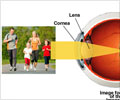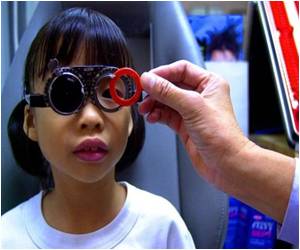Vision loss resulting from uncorrected myopia affects millions of people. However, providing regular eye check-ups, community vision screening programs, and spectacles can correct millions of people’s eyesight.

- 538 million people with vision impairment from uncorrected myopia
- Resulting productivity loss of US$244 billion
- Represents over 1% of GDP in the East Asia, South Asia, and South East Asia regions
- Investment of US$20 billion would eliminate avoidable vision impairment globally
Vision impairment caused by uncorrected myopia cost the global economy an estimated US$244 billion in lost productivity in 2015, according to a new study published in the March print issue of the scientific journal Ophthalmology.
TOP INSIGHT
Millions of people suffer vision loss resulting from uncorrected myopia. Therefore, conducting regular eye check-ups, implementing effective community vision screening programs and delivering spectacles and contact lenses could be a better solution to protect millions of people’s eyesight.
Read More..
The authors say a one-off investment of around US$20 billion would establish the services necessary to provide vision correction to all who need it, potentially leading to a significant annual saving in productivity.
Co-author Tim Fricke, from Brien Holden Vision Institute, says, "On current trends, we expect there will be 2.6 billion people with myopia globally in 2020. While the majority will have access to corrective lenses such as spectacles and contact lenses, enabling them to have good vision, current service capacity will leave well over half a billion people unable to access an eye examination and appropriate correction."
"The impact of vision impairment on lives can be substantial, including affecting employment, education and social interaction. This study captures one element of that, demonstrating the scale of the economic burden. For a single health condition to result in a loss of over 1% of GDP is enormously important. The findings also serve to highlight the potential value in funding the interventions needed to eliminate this unnecessary impairment."
A combination of factors explains the substantial burden in East Asia says Prof Padmaja Sankaridurg, Head of Myopia at Brien Holden Vision Institute "The high-density urban living with a focus on near based activities has resulted in the high prevalence and also in a large number of people with inadequate visual correction."
"Peak international eye care and health agencies, governments and international NGOs are working collaboratively to build the sustainable eye care systems that would address this need," says Prof Sankaridurg. "This research demonstrates a need for funding to be either prioritized or sourced, to allow the successful implementation of these efforts."
"Even without considering these other costs our analysis shows that the burden is substantial and the savings by implementing the services needed would be significant," Prof Sankaridurg added.
Source-Eurekalert
 MEDINDIA
MEDINDIA




 Email
Email










